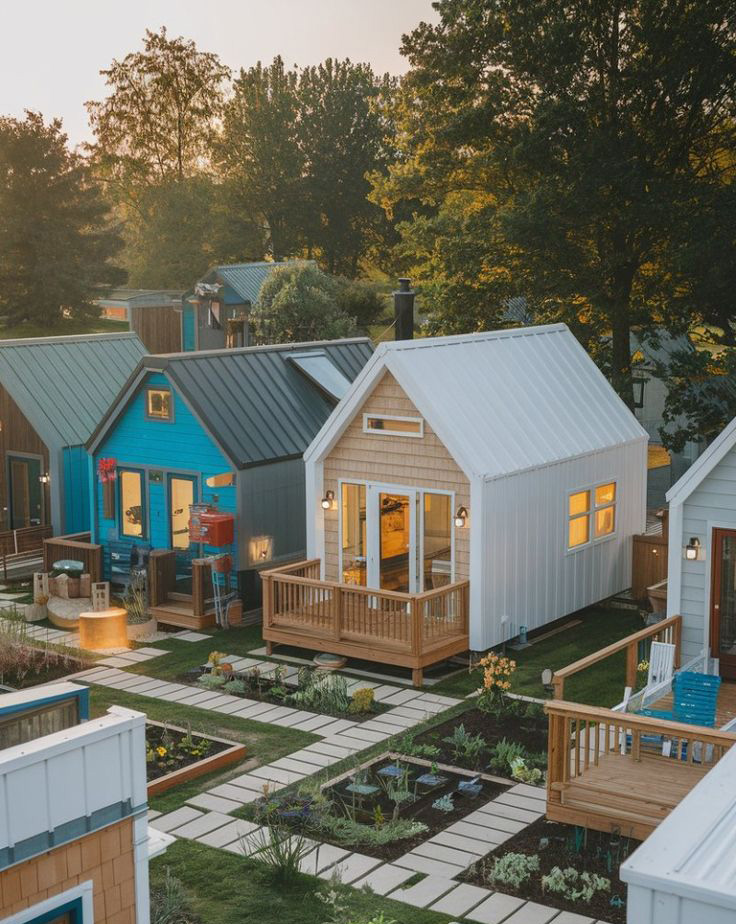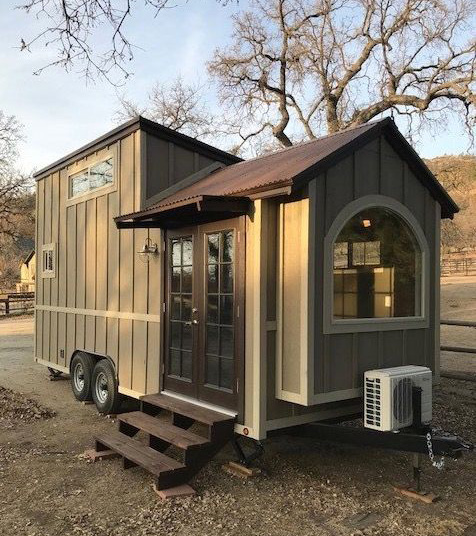
Tiny House Communities and the Lifestyle They Offer

The tiny house movement has blossomed into more than just a trend; it’s a lifestyle choice embraced by individuals seeking simplicity, sustainability, and a sense of community. Tiny house communities are emerging across the globe, offering unique living experiences and fostering close-knit, supportive environments. Here’s a look at the appeal of tiny house communities and the lifestyle they offer.
The Rise of Tiny House Communities
Minimalist Living: The desire to downsize and live with less is driving many people to tiny house living.

Sustainable Lifestyle: Tiny homes are often built with eco-friendly materials and designed for energy efficiency, attracting environmentally conscious individuals.
Types of Tiny House Communities:
Located within cities, these communities provide tiny living with access to urban amenities. Shops, public transport, and jobs are often nearby.
Rural tiny house settlements are found in the countryside. They focus on nature, peace, and self-sufficient living.
Mixed-Use Developments: These communities combine tiny homes with shared facilities and common spaces. They promote social interaction and collaboration.

Benefits of Tiny House Communities
Affordability:
Lower Living Costs: Tiny homes are generally less expensive to build, maintain, and heat compared to traditional homes.Shared Resources: Many communities offer shared resources like gardens and workshops. This reduces individual expenses.
Strong Sense of Community: Supportive Environment: Living in close proximity fosters strong relationships and a sense of belonging.

Collaborative Living: Residents often share responsibilities and collaborate on projects, creating a cooperative living environment.
Sustainable Living:
Eco-Friendly Practices: Communities often emphasize sustainability with shared gardens and composting. They also use renewable energy sources. Reduced Carbon Footprint: The smaller size and efficient design of tiny homes contribute to a lower environmental impact.
The Lifestyle of Tiny Home Communities
Simplified Living: Minimalism: The limited space encourages residents to prioritize essentials and eliminate excess belongings.

Focus on Experiences: With fewer possessions, residents often place greater value on experiences, relationships, and personal growth.
Flexibility and Freedom:
Mobility: Many tiny homes are on wheels, allowing residents to relocate with ease.
Financial Freedom: Lower living costs can lead to greater financial independence and the ability to pursue passions and hobbies.
Connection to Nature:
Outdoor Living: Many communities are designed to maximize outdoor spaces, encouraging residents to spend more time in nature.

Gardening and Farming: Residents often engage in gardening, farming, or permaculture, enhancing their connection to the land and self-sufficiency.
Challenges and Solutions in Tiny Home Communities
Zoning and Legal Issues:
Navigating Regulations: Zoning laws and building codes can be challenging. But many communities work with local governments to find solutions.
Advocacy and Education: Advocacy groups and tiny house associations are raising awareness. They are also pushing for more accommodating regulations.
Space Constraints: Creative Design: Innovative design solutions can maximize the functionality of small spaces. Shared Amenities: Community facilities like laundry rooms and kitchens offset the limits of individual homes. Recreational areas also enhance shared living.

Building Harmony: Effective communication is key to harmony in close-knit communities. Conflict resolution strategies are also essential. Governance Models: Many communities use cooperatives or homeowner associations. These models help manage shared responsibilities and decision-making.
Examples of Successful Small Home Communities
Boneyard Studios (Washington, D.C.):
An urban tiny house village showcasing sustainable living in a metropolitan setting.

Quixote Village (Olympia, Washington):
A community of tiny homes for formerly homeless individuals, providing stability and support. A rural tiny house community emphasizing nature, community, and sustainable living.
Tiny house communities offer a unique mix of affordability and sustainability. They also promote a strong sense of community. By embracing minimalism, they provide a fulfilling lifestyle. These communities build deep social connections. They stand as an alternative to traditional housing. As the tiny house movement expands, their popularity will likely grow. They offer a simpler and more connected way of life.
Joining a tiny house community? Don’t forget to learn about tiny home insurance options that keep you protected.











